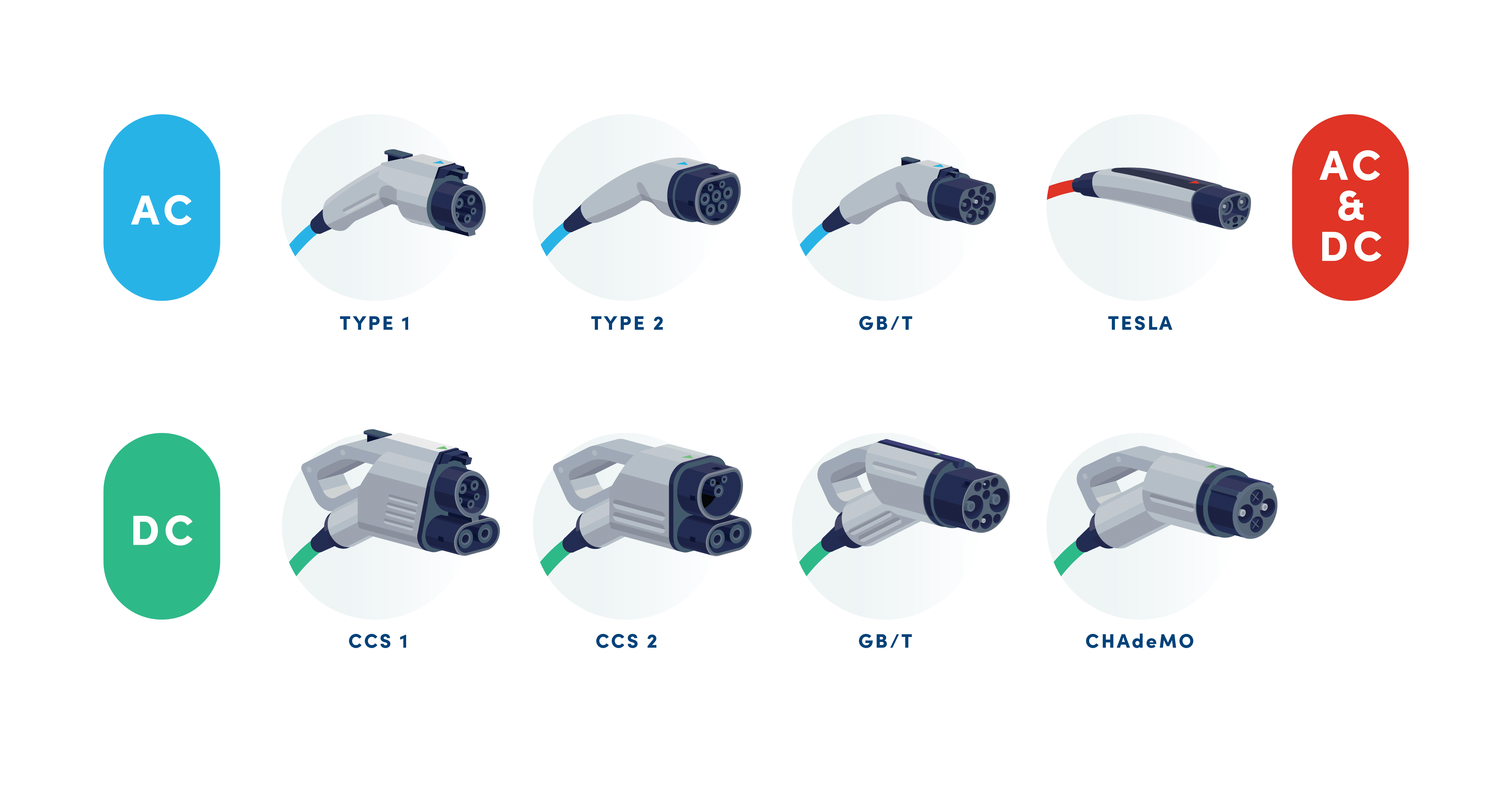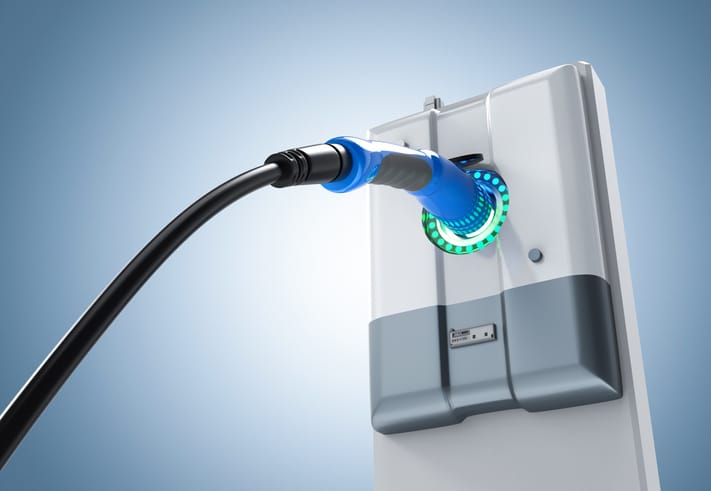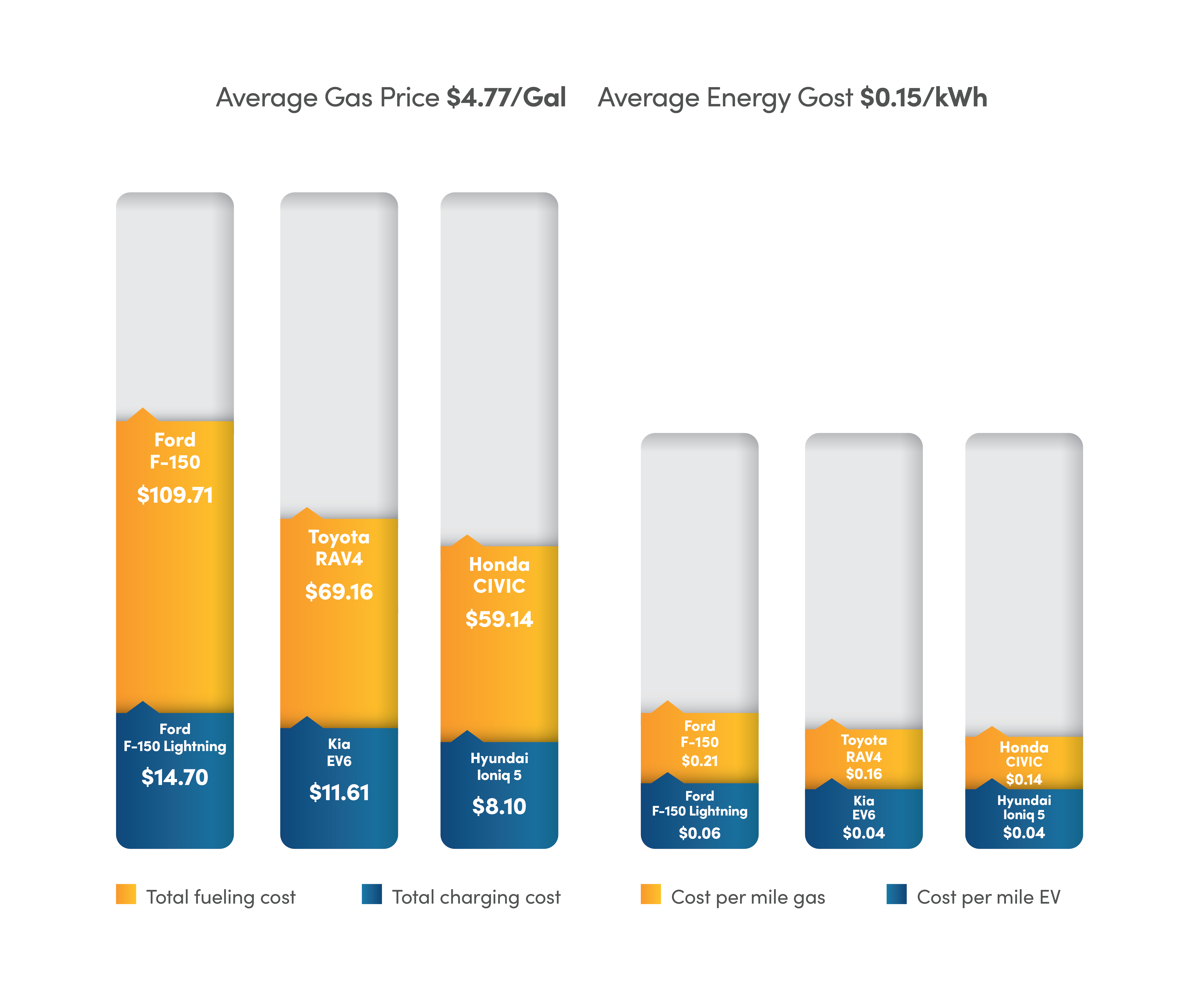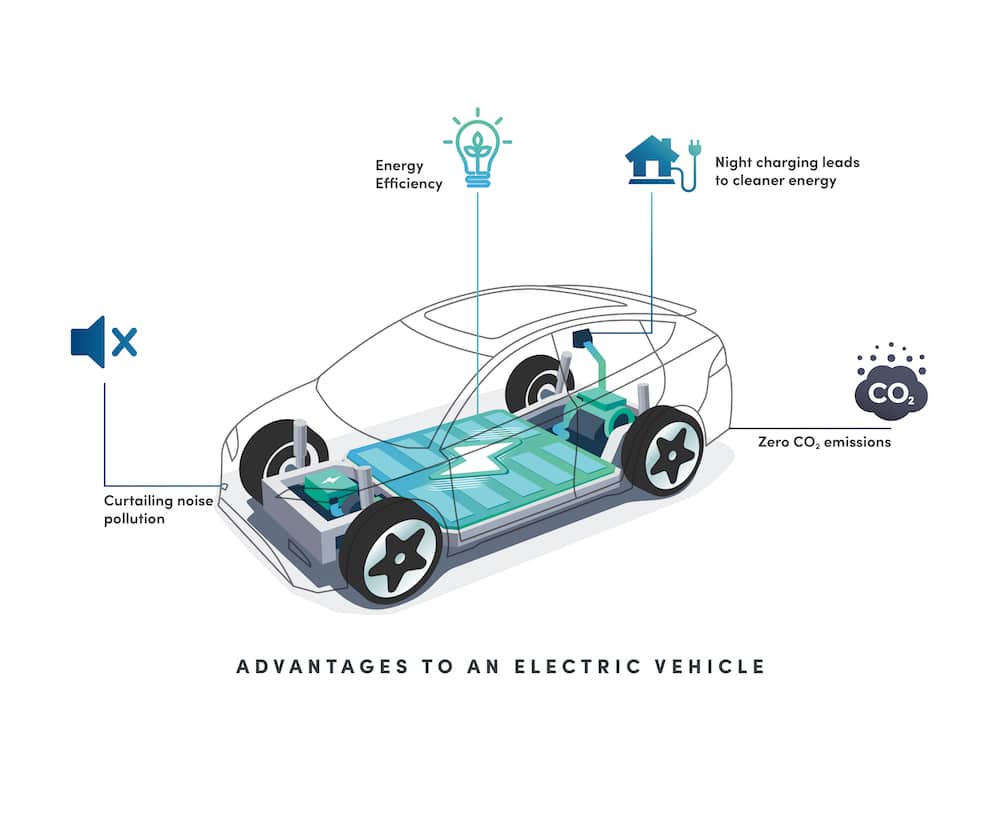Dick Hannah EV Buyers Guide
EV Buyers Guide for Oregon and Washington Residents
Welcome to Dick Hannah’s EV Buyers Guide! We’ve put this together specifically for Oregon and Washington residents looking to buy a new electric vehicle (EV). With the growing popularity of EVs, we understand that the buying process can be overwhelming. That’s why we’ve curated this guide, tailored to your needs, to help simplify the process.
Our team of experts has included everything you need to know about EVs, from charging infrastructure to incentives available in your state. So, whether you’re a first-time EV buyer or looking to upgrade your current car, this guide will provide you with all the information you need to make an informed decision.
What is an Electric Vehicle
The biggest difference between a gas car and an electric vehicle is the fuel. But there is more to it than just that. The systems that an EV uses to ‘push’ the car along is different, and the kind of maintenance you should expect is going to differ a bit and so is the general driving experience.
One of the more interesting differences is how a combustion engine differs from a induction motor. A combustion engine typically works by igniting fuel to generate force. With an induction motor in and EV works by sending electricity to the stator, a stationary part of rotary electromagnetic devices, and then as the energy flows through the stator it produces a rotating magnetic field that turns the rotor, which then passes the force generated to things like putting the wheels into motion.
Another aspect of an EV that you can look forward to is the driving experience and in turn the maintenance needed for the electric vehicle. These are tied together in some interesting ways, one of the first things you notice when driving is the amount of torque generated by the EVs engine. With the added torque, along with more curb weight, you may need to replace your tires a little more often.
The other thing that is interesting about the driving experience is the regenerative braking. Regenerative braking slows your car when you lift your foot from the gas pedal, and it uses the motion of the car to send a little charge back to your battery. With the regenerative braking, you will save life on your brakes since you will use the engine to help brake more than the brake pedal.
Is an EV Right For me
For most folks, the answer is yes, however there are certain things you want to ask yourself before you take the plunge into the world of electric vehicles and leave the gas behind.
Does the car have enough range?
When considering if an electric vehicle has enough range for you, it’s important to take your daily driving habits into account. Start by looking at the range of different electric vehicles and figure out how far each one can go on a single charge. Then, think about the typical distance you drive each day and consider how often you will need to charge your EV.
If you have a short daily commute, an electric vehicle with a relatively smaller battery may work just fine for you. On the other hand, if you often take long road trips or have a longer daily commute, you will want to look for an EV with a larger battery and longer range.
It’s also important to consider your charging options. If you have access to a charging station at home, work, or in your community, you may be able to get away with a car with a shorter range. However, if you don’t have easy access to charging stations, you will want to prioritize EVs with longer range.
Ultimately, the key is to take a realistic look at your driving needs and match them to an EV that can meet those needs. Keep in mind that the range of electric vehicles is continuously improving as battery technology advances, so take some time to do your research and stay up to date with the latest advancements in the EV industry.
Can I Charge my Electric Vehicle at home?
There are several options for charging your electric vehicle at home.
The most common type of EV home charging equipment is a Level 2 charging station, which can charge your EV faster than a standard wall outlet. Level 2 charging stations can be hardwired directly into your home’s electrical system or can be plugged into a dedicated 240-volt outlet.
Another possibility is a Level 1 charger, which is simply a cord set that can be plugged into a standard 120-volt wall outlet. However, Level 1 charging is much slower than Level 2 charging and may not be enough to fully charge your EV overnight.
When considering home charging options, it’s important to think about the charging times. Each electric vehicle has a different battery capacity, so charging times will vary depending on the make and model of your EV. It’s also important to consider your driving habits and route, as well as the time of day when you typically charge your EV.
Another important factor to consider is the cost of the charging equipment and installation. You may be eligible for tax credits or rebates when buying and installing an EV charger, so be sure to research the incentives available in your area.
It’s also important to have a qualified electrician install your EV charger to ensure it is safe and up to code. Additionally, be mindful of how you run your home’s electrical system. If you charge your EV along with multiple other high-power electrical devices, it could overload your home’s electrical system.

Overall, make sure to research the available charging options and consult your electrician to decide which charging solution is best suited for your EV and your home.
Public Charging stations
Public charging stations can be a crucial part of owning an electric vehicle. Here are a few things to keep in mind when using public charging stations.
- Types of Chargers: Public charging stations come in two main types: Level 2 and DC fast Chargers. Level 2 Chargers are slower and most commonly found at public parking garages, recreation centers, or shopping centers. DC fast chargers deliver a charge faster, which is helpful during longer travel and are found more often on interstates, highway rest stops, and urban locations.
- Payment: Some charging stations are free, but many require payment. Before you plug in, make sure you understand the payment system and potential fees.
- Availability: Depending on the location and time of day, you may find public charging stations to be occupied. Consider charging during off-peak hours or checking ahead for station availability. There are a variety of apps that will help you see if they are full or not.
- Apps: There are several apps and websites that can help you find nearby public charging stations, some of which can specify whether a charging station is currently in use and its charging level speed. Examples include ChargePoint, EVgo, and PlugShare amongst others.
- Safety: Always take proper safety precautions when using a charging station. Follow the instructions on the charger, do not leave your car unattended while charging for an extended period of time, and be aware of your surroundings. Additionally, remember to disconnect your car when it’s fully charged to give room for others to charge. One of the first things you notice when driving is the amount of torque generated by the EVs engine. With the added torque, along with more curb weight, you may need to replace your tires a little more often.
Public charging stations can provide flexibility for electric vehicle owners, but it’s important to plan ahead, do your research, and follow best practices when using them. By keeping these tips in mind, you can ensure you have a safe and efficient public charging experience.

New Vs Used
There are several benefits to buying a used EV compared to buying a new one, but also some potential downsides. Let’s take a closer look.
Benefits of Buying a Used EV
- Lower Price: A used electric vehicle typically costs less than a new one. This allows you to get the electric driving experience at a more budget-friendly price.
- Depreciation: EVs tend to experience faster depreciation in the early years of ownership, so buying a used electric vehicle with a few years of use on it may not lose as much value over the time you own the vehicle.
- Possible Incentives: Depending on where you live, you may qualify for rebates or tax incentives when you buy a used EV.
- More Options: Since electric vehicles have been on the market for a few years, there are more used options available than there are new models.
Downsides of Buying a Used EV
- Limited Range: Older used EVs may have a shorter electric range than newer models, limiting your driving options.
- Battery Degradation: Electric vehicle batteries degrade over time, meaning used EVs may not have as much range as they did when they were brand new. This could potentially cost money later down the line if the battery needs to be replaced.
- Limited Warranty: Used electric vehicles typically have a shorter warranty than a new one, and EV batteries may have an even shorter warranty. Buying a Certified Pre-owned EV may come with an extended battery warranty, so it is worth looking into.
Overall, buying a used electric vehicle can be a great way to get a more affordable, eco-friendly vehicle without breaking the bank. However, it’s important to consider the potential downsides and do your research before making a purchase. If you are interested in buying a used electric vehicle, make sure to get a pre-purchase inspection and request the maintenance records to make informed decisions.

Driving an EV
The driving experience with an electric vehicle can be quite different from driving a gasoline-powered car. Here are some aspects that make electric cars unique.
- Instant Torque: Electric engines supply instant torque, which means that from the moment you press the accelerator pedal, you get a smooth and silent burst of power. This can allow for a more responsive and exhilarating driving experience.
- Regenerative Braking: EVs use regenerative braking, which means that the energy generated when you brake is captured and used to charge the battery. This not only helps your car go further between charges, but also has the added benefit of extending the life of your brakes while making it easier to stop.
- Quiet Ride: Since electric engines produce less noise than their gasoline counterparts, the cabin of an EV is typically quieter and less obtrusive. You will notice less background noise and you'll be able to pick up sounds inside and outside the vehicle that you may have missed before.
- Range Anxiety: One of the biggest differences with an EV is that you'll need to keep an eye on your range. While range anxiety can be an issue at first, the extended ranges of today's EVs and increased number of charging stations make it less of a concern. With proper planning and awareness of local charging stations, a full day of driving can be easily done with an EV.
- Different Feel: Finally, it's important to note that electric vehicles may have a slightly different feel than gasoline cars. EVs can feel lighter and nimbler due to their battery weight distribution and low center of gravity. An EV may have more weight concentrated at the bottom, giving it a balanced sensation.

Types of EVs
There are several types of electric vehicles available on the market today, each with its own unique features and advantages.
- Battery Electric Vehicles (BEVs): BEVs are fully electric vehicles that run only on electric power stored in their batteries. These vehicles have no gasoline engine and no tailpipe emissions. They have a range of up to 400 miles or more on a single charge and require a charging station to recharge their batteries
- Plug-in Hybrid Electric Vehicles (PHEVs): PHEVs have a gasoline engine but also have a battery that can be charged using a charging station. They have a limited electric-only range, typically around 20-50 miles, but once the battery is depleted, the gasoline engine takes over to power the car. PHEVs offer the choice to use gasoline when needed for longer trips and the electric power for shorter commuting.
- Hybrid Electric Vehicles (HEVs): HEVs combine an electric motor with a gasoline engine to increase fuel efficiency. They can’t be plugged in, and the gasoline engine is the primary source of power, but the electric motor provides more power when needed.
- Fuel Cell Electric Vehicles (FCEVs): FCEVs use an electric motor and are powered by electricity generated from hydrogen fuel. They produce no harmful pollutants but require a specialized hydrogen fueling infrastructure. Building a hydrogen fueling network across the United States is in progress but is currently in the beginning stage.
Ultimately, the type of electric vehicle you choose depends on your driving habits and preferences. If you’re looking for an all-electric driving experience, or extended daily commutes, a BEV might be best for you. If you need a backup gasoline engine for longer trips, a PHEV is the way to go. If you’re looking for better fuel economy and a greener footprint, an HEV will provide a more efficient, gasoline/electric drive. Additionally, if you’re interested in futuristic technology, FCEVs offer a green energy source for powering the vehicle.
Electric Vehicle Battery Range
- Trips: When planning a longer trip, it’s important to consider the charging network along your route and your vehicle’s range. Before your trip, look up charging stations along your route, including their hours of operation. Be sure to plan for extra time during your trip, so that you can recharge as necessary.
- Work: If you plan to drive your EV to work, it’s important to consider how far your commute is each day and if your daily driving habits will require recharging. Given the average range of most EVs, it is possible that your round-trip commute may need a daily recharge. You may also want to look for public charging stations along your commute or consider installing a Level 2 charger at your workplace.
- Hobbies: If you have hobbies that include outdoor or off-road activities, remember to consider the distance to travel to these activities, and to plan accordingly for charging needs.
- Time of Year: During colder months, cold batteries can cause range limitations. When the weather is cold, it’s important to preheat your vehicle before leaving and park it in a heated garage or location whenever possible. During summer months, high heat can also affect your range, so make plans to moderately cool the inside of your EV before driving to avoid draining your battery and limit your use of “max AC” settings that use more energy.
Overall, range considerations will vary depending on individual driving habits and preferences. By factoring in trips, work, hobbies, and time of the year, you can make the most out of your EV driving experience and avoid running out of power while on the road.
Cost of Owning an Electric Car or Truck
The cost of ownership of an EV vs. a Gas Car can vary depending on various factors like the cost of the vehicle, fuel or electric costs, taxes, and maintenance. However, there are a few general cost differences that are helpful to know:
- Cost of Vehicle: Electric vehicles tend to have higher initial purchase price compared to gasoline vehicles, although incentives from the government and the automakers are beginning to bring down the purchase cost.
- Fuel and Electric Costs: When it comes to operating costs, the savings can be significant. Electricity rates vary across the US based on location but on average, an EV can cost three to five times less to operate per mile than a gas-powered car. The average cost of electricity (across all US. states) is nearly $0.13 per kilowatt-hour (kWh). Gasoline prices are a bit volatile depending on the region, but for the US average, range between $2.60 – $4.75 a gallon.
- Maintenance: Electric vehicles have fewer moving parts in their electric powertrain than an Internal Combustion car, which would lower the need for typical maintenance tasks such as oil changes or exhaust system repairs. However, electric vehicles need battery cooling system, charging port cleaning and ensuring their cooling system, brakes, and tires are kept in good condition. All vehicles require some standard maintenance, but the upkeep of an EV is typically less than a gas only car, and the battery warranties are starting to cover repair costs.
Overall, while the initial purchase price of a new electric vehicle may be higher, fuel and operating costs can be significantly lower. In time, you could be able to recoup your investment if the price point lowers further to surpass ICE vehicle pricing with stronger used vehicle market presence, battery technology advancements, and other factors allowing for electric vehicles to become widely adopted.

Final considerations
Electric vehicles, or EVs, are cars powered by an electric motor and battery instead of an internal combustion engine. They’re environmentally friendly, with zero emissions and no need for gasoline or oil changes. They also have lower operating costs as they require less maintenance than traditional cars. However, it’s important to consider if an EV is right for your lifestyle as they require charging and have a shorter range than most gasoline vehicles.
When deciding on an EV, you can choose between a new or used vehicle. Although a new EV may have better technology and a longer warranty, a used EV can be a more affordable option. Driving an EV is a different experience than driving a gasoline car as there’s no engine noise and they accelerate smoothly and quickly. There are different types of EVs such as all-electric, plug-in hybrid, and hybrid, each with different ranged capabilities. It’s essential to consider the range of an EV when planning road trips or longer commutes. Finally, owning an EV is affordable, with lower fuel costs, tax incentives, and potential savings on maintenance in the long-run. However, it’s important to factor in the upfront costs of an EV and installation of a home charging station.
Environmental Benefits
One thing we didn't cover above is the environmental benefits of owning and EV, since while this may not be the key driver in considering an EV, it is something that is worth thinking about.
Owning an electric vehicle (EV) provides several significant environmental benefits. Firstly, EVs have no tailpipe emissions, meaning they produce no harmful pollutants that contribute to poor air quality or climate change. Secondly, EVs require far less natural resources than traditional vehicles, particularly in terms of oil and gas consumption. Thirdly, as more and more electricity is generated from sustainable sources like wind, solar, and hydro energy, the environmental benefits of owning an EV only continue to grow, making them a crucial component of any widespread effort to reduce carbon emissions and curb climate change.

Dick Hannah is excited to be a part of the new EV revolution in automotive and we hope you continue your car buying journey with us. We have a fantastic selection of Electric Cars and Trucks at our various dealerships for you to check out and maybe take for a test drive. If you have any questions about EVs contact our EV Experts today.


